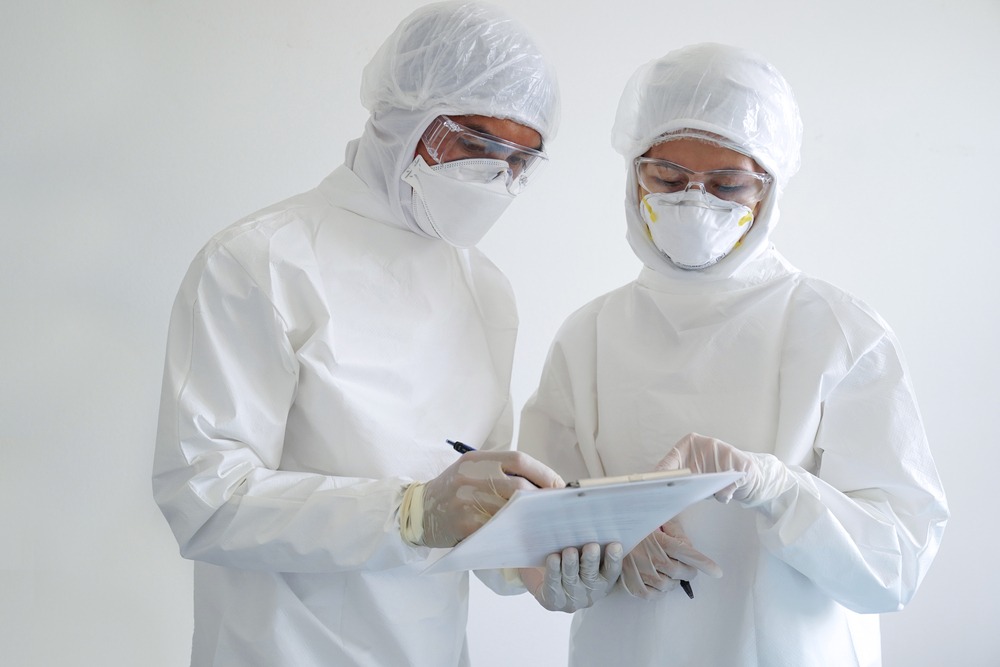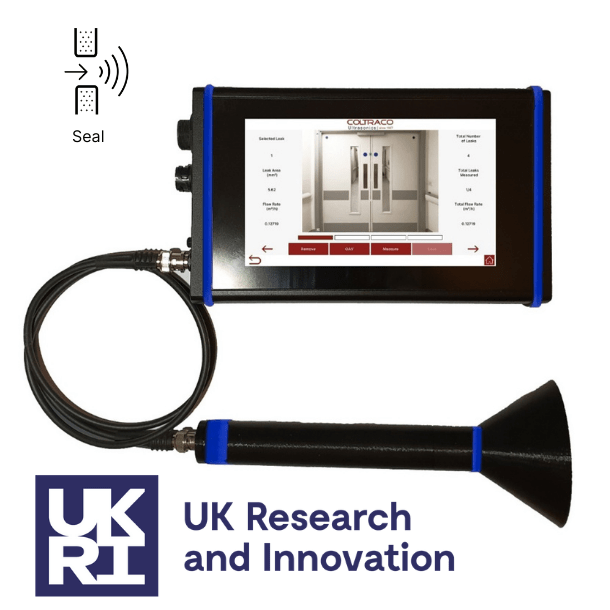
In our lifetime, there has rarely been a greater sense of camaraderie than over the past year.
The nation united under a common health threat and the common good delivered by a National Health Service at their time of need.
In March 2020 the world was forced to stop, readjust, and overcome the barriers this virus has inflicted upon us all.
While it has sadly been a tragedy for so many businesses, households, and livelihoods, it has by no means stopped great British ideas, ingenuity, and innovation.
The 5.9 million UK SMEs, which make up 99% of all business, generating 54% of all UK employment, have demonstrated remarkable resilience in the face of such adversity, and are at the forefront of the Government’s Levelling-Up agenda in the post-Covid-19 world that we are all starting to see at the end of the tunnel.
The “Patch & Hope” Problem
Our NHS struggled to bear the brunt of this virus, and the staff should not also have to constantly concern themselves with the risks of being additionally exposed to the virus.
Existing measures are not allowing this concern to be allayed. In Intensive Care Units (ICU) the NHS has to “negatively-pressurise” each ICU Ward to prevent Covid-19 infection contagion to the rest of the hospital.
However, if the air permeability of ICU Wards is not sufficiently low, negative-pressurisation cannot be achieved effectively.
The methods presently being undertaken to verify air permeability, are disruptive, costly and do not allow operators to identify specific areas of leakage.
The maintenance teams have limited means to monitor the airflow that sustains negative or positive pressurisation or identify the location and size of any specific leaks, leaving any remedial action down to mere speculation.
So limited are these means that healthcare personnel are forced to adopt an approach that can only be described as “Patch and Hope”.
What is the Solution?
Our Portascanner COVID19 brings a non-invasive answer to this ‘patch and hope’ measure, and with minimal training, allows healthcare and pharmaceutical personnel to locate and then quantify the leaks in hospital wards, cleanrooms, and sterilisation departments.
The user can calculate the air flow rate through these leaks, generating an air permeability value for an entire room or ward, which the user can compare against the required value for pressurisation.

Quantifying the extent of the leak, or the air permeability rate, is crucial to ensuring positive or negative pressurisation in order to help prevent the spread of disease.
During Covid-19, maintenance of hospital wards has never been more important, and this new hand-held instrument significantly improves the efficiency and air quality of the room, providing confidence in the ability of a ward to contain the virus.
Furthermore, it saves considerable time and resources in preventing FPE (fan pressurisation equipment) from being installed within an unsuitable room.
The downtime required for existing test procedures is simply infeasible given the disruption to treatment this would cause.
So, through using ultrasound, this innovation ensures minimal disruption to any room or facility, lending more time for the staff to treat their patients.
This pressurisation is also crucial to hazardous pharmaceutical drugs, and highly infectious diseases such as Ebola, where sterilised environments must be maintained, therefore this solution allows sterilisation to never be compromised.
Go Above and Beyond Compliance
According to BSRIA (Building Services Research and Information Association), the air permeability of a negatively pressurised isolation ward must not exceed 2.5m³/(h-m²) at a reference pressure of 50 Pascals.
It is this value that is used in the reporting feature of the Portascanner COVID19.
The user can provide evidence of the maintenance programme, through the camera feature, and with the tap of a finger, export a test report, all in one small portable instrument.
Each leak is therefore marked and quantified in terms of the air flow rate, and its contribution to the total air permeability.
This is then calculated and compared to the threshold value, whilst the cross-sectional area of the leak is also recorded. No third party is required, and all the user has to do, is a quick test, scanning any possible leak sites with the receiver, whilst the generator is directed at the structure from the opposite side.
Any peaks in the received intensity should be marked as a leak for potential investigation and remedial measures undertaken if necessary.
A full test is then carried out to decipher the leak size. Sufficient airtightness is required to facilitate good ventilation and filtration practices, so that ‘safe working’ conditions be achieved, which is at the heart of improving the ‘health’ of a building.
This simple instrument can be used regularly by in-house maintenance teams when required, with no disruption, enabling leaks to be detected and remedied as they occur.
Overcoming a Global Pandemic
Coltraco Ultrasonics have proudly developed Portascanner COVID19 from its rich heritage in Naval ultrasonic technologies to monitor watertightness in warships and submarines.
At the beginning of 2020, we were predominantly a two-market sector company.
However, in March we realised the vulnerability that this posed, and the possible opportunity for change.
So, through great diversification we are now a multi-sectoral one, working across 25 different sectors, delivered by an exclusive global distribution network.
One of these new sectors that we are most proud to support is the healthcare sector.
During the coronavirus crisis, Coltraco Ultrasonics worked tirelessly to fulfil a UK-Government funded Covid-19 emergency technology requirement in June 2020, to design the Portascanner COVID-19, which we have now successfully done, created by a team of British physicists working at the cutting edge of compartmentation integrity.
Helping our healthcare system build resilience and security within
Our primary aim when we developed this exciting new technology was to support our NHS: to protect the lives of both our staff, and patients.
The Portascanner COVID-19 is based on the technology of our award winning globally recognised Portascanner WATERTIGHT, an ultrasonic watertight integrity monitor used by our Royal Navy, which has been re-designed specifically.
It aims to reduce the spread of airborne disease by inspecting rooms for any leakage and establishing the pressurised airflow rates that, unless identified, can place staff and patients at risk.
A December 2020 study on Covid-19 and air contamination indicates that 56% of air samples taken from hospital hallways and 24% from hospital bathrooms, have high levels of coronavirus.
Samples from ICU rooms were more than twice as likely to be positive, at a rate of 25.2% compared to 10.7% for non-ICU rooms.
There is evidently a pressing need for the virus to be contained. In order to reduce the spread, negative or positive pressurisation must be achieved.
NHS Hospitals have ‘infection targets’ and Portascanner COVID19 help them achieve these.
Why did we design the Portascanner COVID-19?
The UK-Government grant enabled us to put our innovation to the test, and design this unique solution.
During the height of the pandemic, every Thursday evening the moving sound of our Clap for Heroes’ would resonate, as we all applauded and showed our appreciation for our NHS.
2020 highlighted just how much we rely on our unique healthcare system. At Coltraco Ultrasonics, we were simply fortunate enough that we could put our heads together, and realise that we could play our small part in supporting our NHS, from within their very walls.
This Emergency Covid-19 Technology grant enabled us to develop a technology to assist with problems relating directly or indirectly to this pandemic.
We realised we could contribute to the prevention of the spread of airborne pathogens, and thereby significantly reduce the contamination between wards, which also includes harmful substances such as bacteria, gases, chemicals.
In our research we have been able to measure, at high accuracy, holes as small as 0.5mm in diameter, which would be almost invisible to the naked eye.
Coltraco Ultrasonics have 30 years’ experience of designing and manufacturing world leading ultrasonic equipment, and have been able to apply our technological expertise in this area to provide a unique and optimal solution to a new critical problem in our world.
Applying ultrasonics to this new application has never been done before. This will allow the first means of reliably and conveniently testing a key requirement for effective pressurisation. We are proud to be able to present a solution, to improve air quality and protect our healthcare against the spread of airborne diseases, such as SARS-CoV-2 and beyond.
Whilst this past year has proved an insurmountable obstacle to overcome for so many, there is now light at the end of the tunnel, that through innovation and collective unity, we can all come together and rebuild stronger than before.






